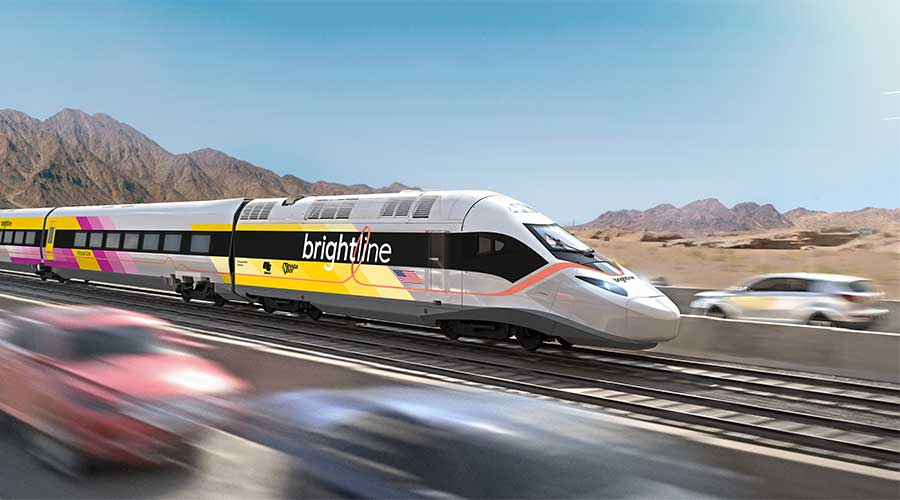Stay updated on news, articles and information for the rail industry
November 2013
Rail News: Passenger Rail
NYCT, Metro-North continue Hurricane Sandy recovery process
By Angela Cotey, Associate Editor
Oct. 29 marked the one-year anniversary of Hurricane Sandy’s landfall in New Jersey and New York. While the region’s transit systems have long since returned to mostly normal service, it’s far from business as usual for agencies such as MTA New York City Transit (NYCT) and MTA Metro-North Railroad.
Work is under way to complete long-term repairs to infrastructure heavily damaged by the storm in order to restore it to pre-Sandy conditions.
Metro-North is completing $313 million worth of restoration projects, mostly on the Hudson Line. About half of the corridor was submerged after the storm. Power and signal systems and cables were damaged by saltwater, as were the facility houses for the Harlem River Lift Bridge.
The agency is in the design phase for a project to replace Hudson Line substations at Riverdale, Tarrytown and Croton-Harmon.
“We’ve kind of band-aided things so they are operating, but they do need to be replaced,” says Kim Smith, Metro-North’s deputy director of capital planning and programming.
Metro-North also is designing the replacement of the Harlem River bridge facility houses, which control the power systems that raise and lower the structure. Construction is scheduled to begin in early 2014.
The agency also needs to replace communication cables and power components along 30 miles of the Hudson Line, from the Bronx to Croton-Harmon. Preliminary design is scheduled to begin soon; then, the agency will employ a design-build method, with construction starting in late 2014.
“That way, we can expedite the work as much as possible,” says Smith, adding that the work will take about four years to complete.
The agency plans to maintain current service levels during construction, but there are about 160 Metro-North trains, as well as some Amtrak trains, that use the corridor daily.
“It’s exciting to be moving forward and getting this work done, but we realize we have an uphill climb along the way,” says Smith.
Tube repairs
Same for NYCT, which now is focusing its recovery efforts on fully repairing the Montague and Greenpoint tubes, both of which were heavily damaged during the hurricane.
The Montague Tubes were the last tunnels NYCT pumped out post-Sandy, leaving them under water for nearly two weeks. Service was restored in December 2012, but officials knew it was only temporary. The tunnel’s track, signals, switches, relays, duct banks, cables, pump rooms, lighting, ventilation and communication rooms would all need to be replaced.
“It basically amounts to a near rebuilding of the entire tube,” says NYCT spokesperson Kevin Ortiz.
The agency began the effort in August, shutting down the Montague tubes for an estimated 14 months while the work is completed.
“If it takes 14 months to do this with the tube shut down entirely, can you imagine how long it would take if we could only work on weekends?” says Ortiz. “This also will allow us to get to the other tubes a lot quicker.”
In the meantime, NYCT is conducting similar work in the Greenpoint Tubes. The project is being completed in two phases. As of press time, NYCT had shut down service in the tunnel for 10 of 12 scheduled work weekends. Next year, NYCT will close the tunnels for a five-week stretch to finish the project.
NYCT officials expect the subway system to return to pre-Sandy conditions by 2016.
“On a parallel track, we will look at resiliency,” says Ortiz. “That is a process that will take years.”
For details on how the agencies plan to prevent flooding during future storms, click here.
Keywords
Browse articles on NYCT Metro-North Hurricane SandyContact Progressive Railroading editorial staff.


 LRW Honors Amtrak’s Acheson As Railway Woman Of The Year
LRW Honors Amtrak’s Acheson As Railway Woman Of The Year
 From Editor-In-Chief Foran: Of Gender Equity And Inclusion
From Editor-In-Chief Foran: Of Gender Equity And Inclusion
 Spotlight On Some Of Today’s Rail Safety Products
Spotlight On Some Of Today’s Rail Safety Products
 Women of Influence in Rail eBook
Women of Influence in Rail eBook
 railPrime
railPrime







